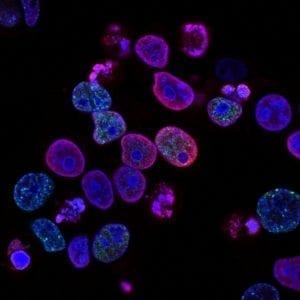Pheochromocytoma
What is a pheochromocytoma?
A pheochromocytoma is a rare type of tumor. Most of them are benign (noncancerous). It arises from specific cells called chromaffin cells; these create hormones that are necessary for normal bodily functions. Most pheochromocytomas appear in the adrenal glands, which are located above the kidneys in the back of the upper abdomen. About 90 percent of pheochromocytomas occur in the adrenal medulla, the adrenal gland’s inner layer and the location of most chromaffin cells. The 10 percent of tumors that occur outside of this area are called extra-adrenal pheochromocytomas or paragangliomas. Paragangliomas can be found in the chest, heart, neck, and bladder. Pheochromocytomas are rare tumors, only occurring in less than 1 percent of people with high blood pressure. Since many individuals with these tumors go undiagnosed, the true incidence of pheochromocytomas are unknown. They affect males and females equally, and can affect people of all ages. They most commonly occur in people between 30 and 50 years old.What are the symptoms of a pheochromocytoma?
In some cases, individuals may not develop symptoms. Those who do may experience sudden episodes that involve these symptoms:- High blood pressure (hypertension)
- Heart palpitations
- Excessive sweating
- Headaches
- Dizziness
- Fatigue
- Paleness
- Pain in the chest or abdomen
- Vomiting
- Diarrhea or constipation
- Weakness
- Anxiety attacks
What causes a pheochromocytoma?
In most cases, pheochromocytomas happen randomly, for unknown reasons. About 25 to 35 percent of cases may be due to an inherited autosomal dominant trait, meaning that the genes received from a parent were mutated. Since it is a dominant trait, only a single copy of the mutated gene is needed for the disease to appear. Symptoms occur because of the release of certain hormones called catecholamines. Chromaffin cells release them. Chromaffin cells are a part of the sympathetic nervous system, which is what controls certain involuntary activities in the body. The release of those excessive hormones causes high blood pressure and other symptoms, including the pheochromocytoma itself.How is a pheochromocytoma diagnosed?
A pheochromocytoma is diagnosed using the following procedures:- Examination of patient’s and patient’s family’s medical history
- Imaging tests: X-rays, MRIs, M-iodobenzylguanidine (MIBG) imaging, and/or Positron emission tomography (PET)
- Twenty-four-hour urine test
- Blood test
- Genetic testing
What are the treatments for a pheochromocytoma?
Pheochromocytoma treatment includes, but is not limited to:- Removal by surgery
- Medications for stabilizing blood pressure
- Genetic counseling
Where can I find out more about pheochromocytomas?
Pheochromocytoma Articles

First Patient Dosed in EO2401 Clinical Trial for Adrenal Tumors
Jessica Lynn
September 14, 2020
Read More »
Clinical Challenges: Nuclear Medicine and Neuroendocrine Tumors
Rose Duesterwald
May 5, 2020
Read More »

Researchers Find Immunotherapy Drug May Treat Pheochromocytoma
Jessica Lynn
March 24, 2020
Read More »

Finding Rare Paraganglioma and Pheochromocytoma Tumors
Rose Duesterwald
February 17, 2020
Read More »

Genetic Testing Again Proves Important for Pheochromocytoma Treatment
Trudy Horsting
February 11, 2019
Read More »

New Treatment for Pheochromocytoma and Paraganglioma Approved by the FDA
James Moore
July 31, 2018
Read More »





